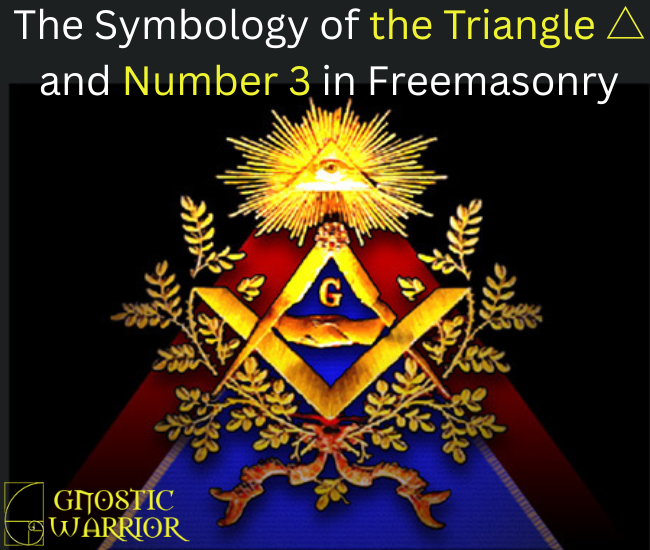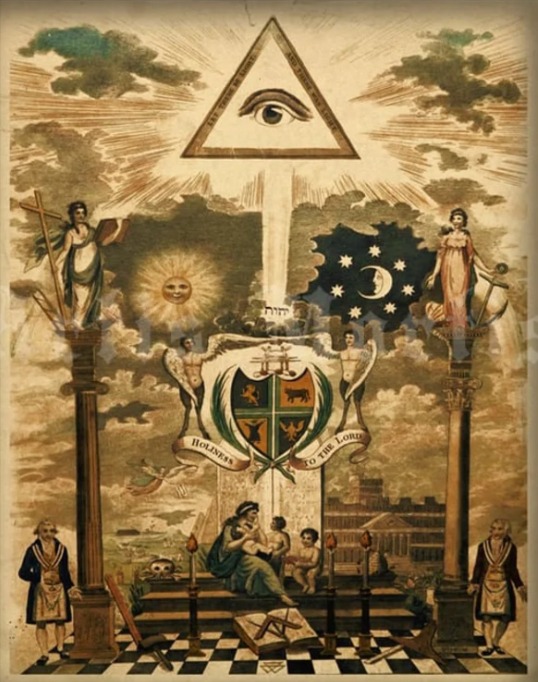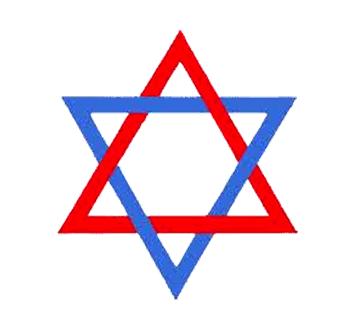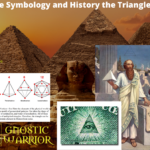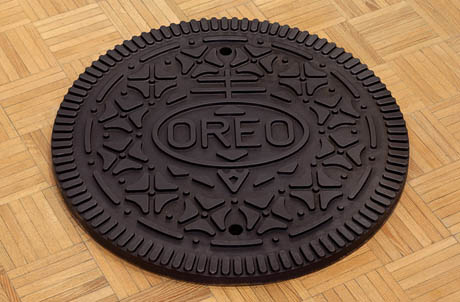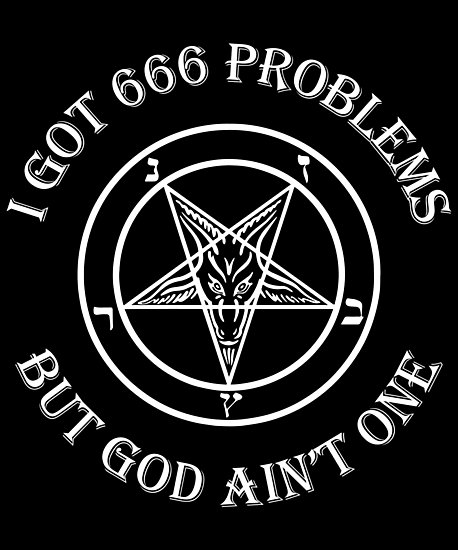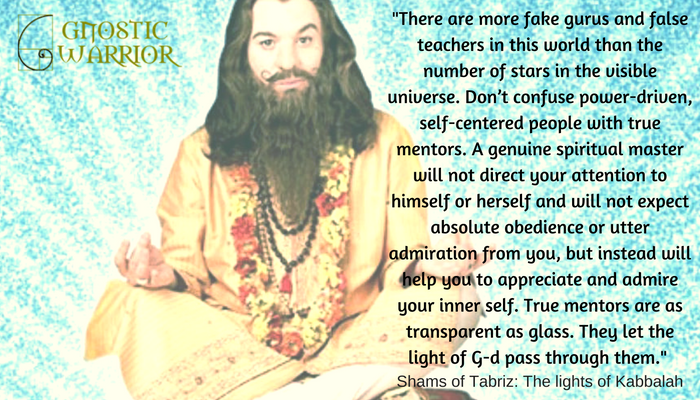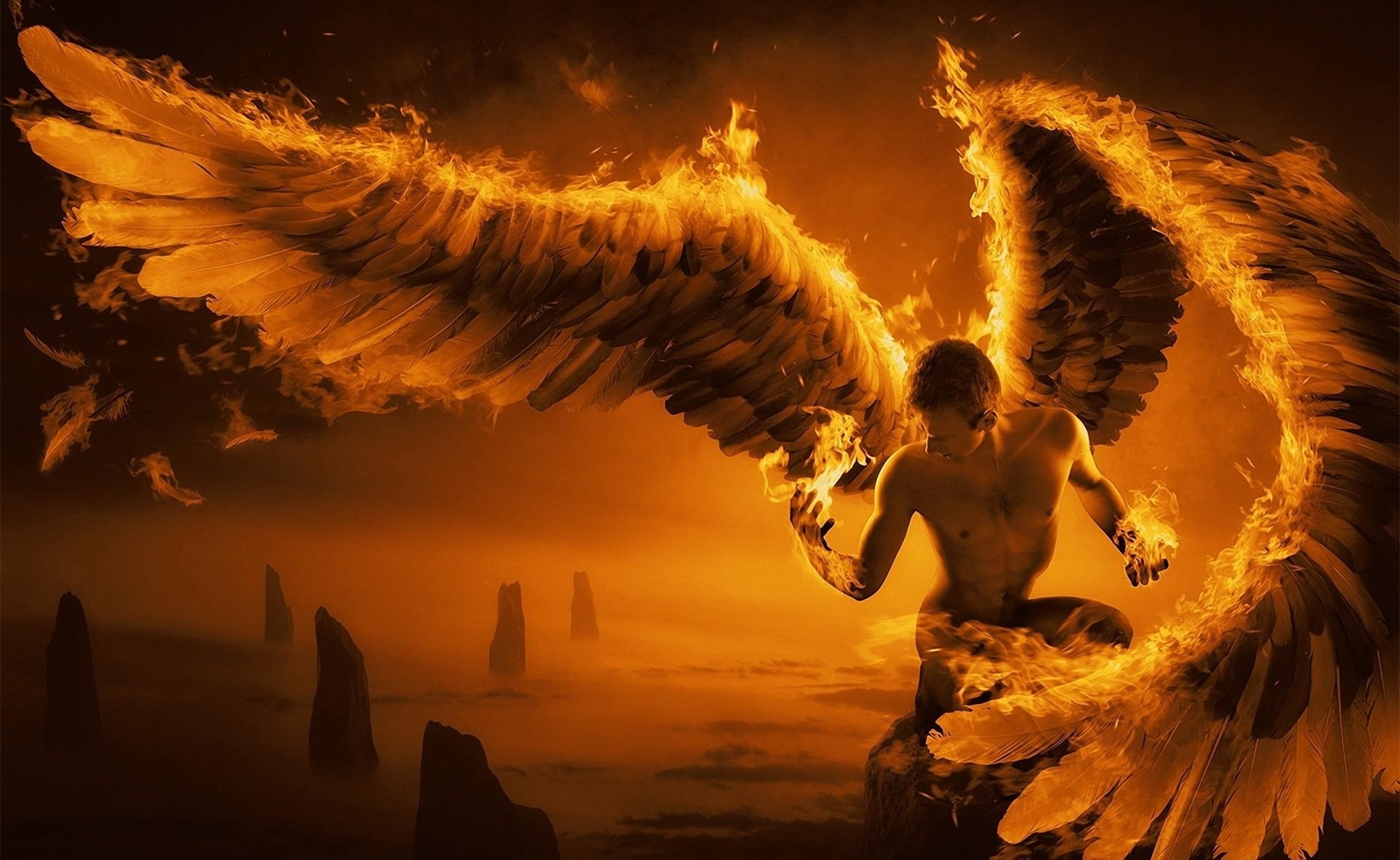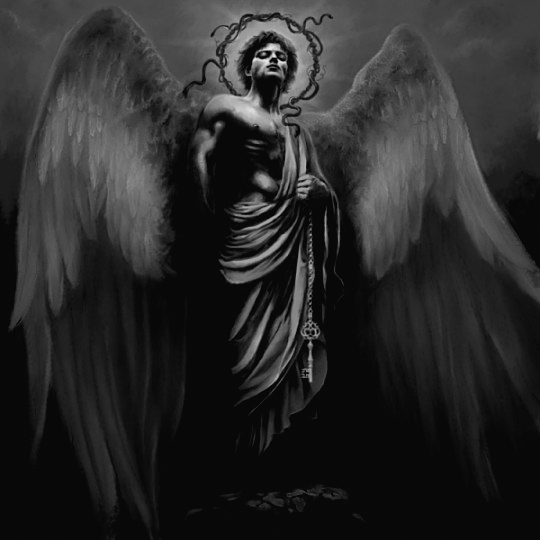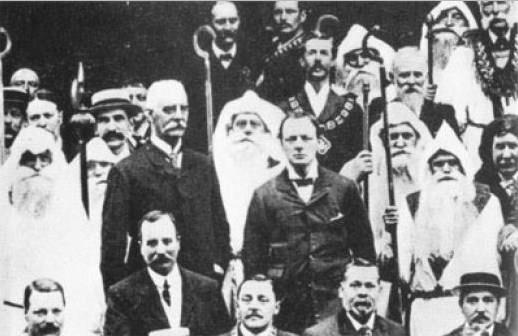Throughout the symbology of Freemasonry, you will find the most prominent of all numbers is 3 (three), and one of the most esteemed symbols is the triangle △, which is also represented by the structure of a pyramid.
3 degrees of Masonry, the 3 pillar officers, and the 3 tenants of Freemasonry.
The 3 different levels of initiation or degrees represent a Mason’s journey toward enlightenment, with the number 3 being significant at various levels of advancement such as the 3rd, and 33rd degrees.
It’s not that you become perfect after reaching the higher levels of Freemasonry. But rather that you are closer to being balanced between your physical self and spiritual self while demonstrating mastery over the world in which the Mason lives.
At its essence, the triangle and number 3 represent the balance and stability between the three worlds of human existence – earth, heaven, and hell. As such, we can it symbolizes the union of body, mind, and spirit, or heaven, earth, and water, and its mastery over these elements.
In Freemasonry, and other mystery schools like Rosicrucianism, the triangle is also a representation of the metaphysical representation of joining together your physical self with your spiritual self to create harmony and balance within yourself and the world.
This is often represented by the square and compass and the number three or the upright triangle interlaced with an inverted triangle such as the Seal of Solomon or Star of David.
According to Manly P. Hall:
“Man’s threefold lower nature—consisting of his physical organism, his emotional nature, and his mental faculties—reflects the light of his threefold Divinity and bears witness of It in the physical world.
Man’s three bodies are symbolized by an upright triangle; his threefold spiritual nature by an inverted triangle.
These two triangles, when united in the form of a six-pointed star, were called by the Jews “the Star of David,” “the Signet of Solomon,” and are more commonly known today as “the Star of Zion.”
These triangles symbolize the spiritual and material universes linked together in the constitution of the human creature, who partakes of both Nature and Divinity.
Man’s animal nature partakes of the earth; his divine nature of the heavens; his human nature of the mediator.” (The Secret Teachings of All Ages)
Albert Pike said;
The ingenious and mystical idea which caused the Triangle to be venerated, was applied to the figure 4 (4). It was said that it expressed a living being, I, bearer of the Triangle △, the emblem of God; i.e., man bearing with himself a Divine principle (Albert Pike, Morals and Dogma, 1871, 632-633).
Freemason, Albert Mackey had written in his Encyclopedia of Freemasonry that there is no symbol as significant as the triangle and was adopted by all nations in early antiquity as a symbol of deity. For Freemasons, he says it represents the Grand Architect of the Universe and the animated principle.
Mackey wrote;
“There is no symbol more important in its significance, more various in its application, or more generally diffused throughout the whole system of Freemasonry, than the triangle. An examination of it, therefore, cannot fail to be interesting to the Masonic student.
The equilateral triangle appears to have been adopted by nearly all the nations of antiquity as a symbol of the Deity, in some of his forms or emanations, and hence, probably, the prevailing influence of this symbol was carried into the Jewish system, where the Yod within the triangle was made to represent the Tetragrammaton, or sacred name of God.
The equilateral triangle, says Brother D. W. Nash (Freemasons Magazine iv, page 294), “viewed in the light of the doctrines of those who gave it currency as a divine symbol, represents the Great First Cause, the Creator and Container of all things, as one and indivisible, manifesting Himself in an infinity of forms and attributes in this visible universe.”
Among the Egyptians, the darkness through which the candidate for initiation was made to pass was symbolized by the trowel, an important Masonic implement, which, in their system of hieroglyphics, has the form of a triangle.
The equilateral triangle they considered the most perfect of figures, and a representative of the great principle of animated existence, each of its sides referring to one of the three departments of creation, the animal, vegetable, and mineral.
The equilateral triangle is to be found scattered throughout the Masonic system. It forms in the Royal Arch the figure within which the jewels of the officers are suspended.
It is in the Ineffable Degrees the sacred Delta, everywhere presenting itself as the symbol of the Grand Architect of the Universe.
In Ancient Craft Masonry, it is constantly exhibited as the element of important ceremonies.
The seats of the principal officers are arranged in a triangular form – the three Lesser Lights have the same situation, and the Square and Compasses form, by their union on the greater light, two triangles meeting at their bases. In short, the equilateral triangle may be considered as one of the most constant forms of Masonic symbolism.
The right-angled triangle is another form of this figure which is deserving of attention. Among the Egyptians, it was the symbol of universal nature; the base representing Osiris, or the male principle; the perpendicular, Isis, or the female principle; and the hypotenuse, Horus, their son, or the product of the male and female principle.
This symbol was received by Pythagoras from the Egyptians during his long sojourn in that country, and with it he also learned the peculiar property it possessed, namely, that the sum of the squares of the two shorter sides is equal to the square of the longest side-symbolically expressed by the formula, that the product of Osiris and Isis is Horus.
This figure has been adopted in the Third Degree of Freemasonry, and will be there recognized as the Forty-seventh Problem of Euclid (see Forty-seventh Problem).” (Source: Mackey’s Encyclopedia of Freemasonry)

Moe is the founder of GnosticWarrior.com. He is a father, husband, author, martial arts black belt, and an expert in Gnosticism, the occult, and esotericism.

